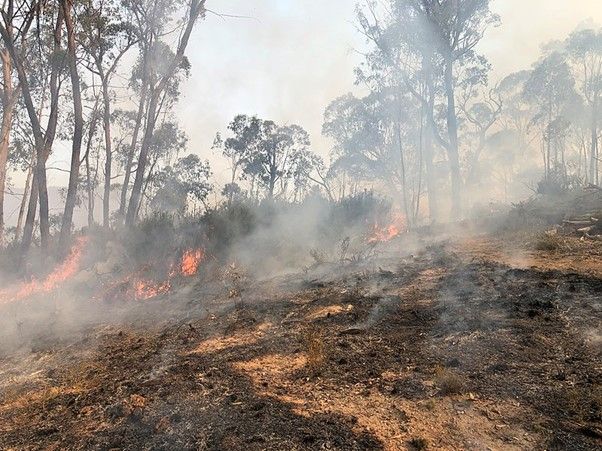Home/Curriculum resources/Fire and land management: past and present /Case Study 1: Miriwoong
Learning Area:
Humanities and Social Sciences
Year level:
Level 6

Case Study 1: Miriwoong
This case study is a part of the Fire and land management: past and present resource.
Clay Stephens Assists with Australian Bushfires. Photographer: BLM Idaho. Source: Wikimedia commons. License: CC BY 2.0
Miriwoong European ideas of seasons consisting of spring, summer, autumn, winter do not match up well with what different parts of Australia experience. In the north of Western Australia, the Mirriwoong calendar has three major seasons:
Nyinggiyi-mageny (wet, December-March) – storms, rain, floods (monsoon time)
Warnka-mageny (cold, April-August) – rain clearing early, storm weathering time, cold rain returning late
Barndenyirriny (hot, September-November) – clear skies, north wind blowing, build-up 0
Traditional Indigenous practice involves burning the native grasses early in the dry season, using small fires lit in a mosaic pattern. Since European colonisation, traditional burning practices have declined, leaving savannah grasses to grow and become perfect fuel for uncontrollable fires late in the dry season. Culturally significant sites and biodiversity have been threatened in recent years due to uncontrolled wildfire in the late dry season. Pockets of rare and sensitive monsoonal vine thickets that are habitat for a number of wildlife were at threat. It was also believed that uncontrolled fires were having a significant effect on the quality of water in springs and waterways that held high cultural and environmental significance 0 .
Traditional mosaic-pattern burns were re-introduced to work in conjunction with modern scientific approaches, reducing fire loads and preventing property losses nearby. The new way of managing incorporates both traditional and modern approaches, consulting both Indigenous and pastoralist communities, prioritising the most vulnerable areas, and revising new fire management plans based on learnings.
Related case studies within this resources:

Case Study 2: Nyungar
In Nyungar culture, the seasonal calendar holds deep spiritual significance, impacting land and plant growth patterns.